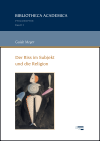Zusammenfassung
Dieses Buch tritt an gegen die Eindringlichkeit postmoderner Anrufungen und ihre rationalen Allmachtsphantasien. Seit der Zeit der Aufklärung möchte Theologie Glaube und Vernunft zusammenbringen. Dabei setzt sie meist ein Menschenbild voraus, demzufolge das Subjekt als ein grundlegend rationales und vernunftbegabtes Wesen erscheint. Vor dem Hintergrund poststrukturaler und psychoanalytischer Erkenntnisse wird dieses Subjektverständnis grundlegend hinterfragt. Es wird die These vertreten, dass der Mensch in einer Anrufung steht, die sich mit den Mitteln der Vernunft allein nicht durchdringen lässt. Immer bleibt ein Riss im Subjekt, den die Theologie und vor allem die Religionspädagogik bei ihren Bildungs- und Vermittlungsbemühungen an zentraler Stelle berücksichtigen sollte.
Abstract
This book takes on the forcefulness of post-modernist appeals and their rational fantasies of omnipotence. Since the Enlightenment, theology has sought to bring faith and reason together. In doing so, it usually presupposes an image of the human being that understands the subject as a fundamentally rational being. Against the background of post-structural and psychoanalytical insights, the book wants to fundamentally question this understanding of the subject. It argues that the human being stands in an invocation that drives him and just cannot be appropriately penetrated with the means of reason. There is always a rift in the subject, which theology and especially religious education should take into account in their educational and mediation efforts.
Schlagworte
Religion Bildung Vernunft Aufklärung Theologie Education Glaube Religionspädagogik Mediation Vermittlung Poststrukturalismus Psychoanalyse Subjekt Faith Reason Menschenbild Postmodernismus postmodernism Anrufung poststructuralism Image of man Allmachtsphantasien fantasies of omnipotence invocation Riss im Subjekt rift in subjectKeywords
subject theology religious education enlightenment psychoanalysis- Kapitel Ausklappen | EinklappenSeiten
- 9–12 Zum Einstieg 9–12
- 153–162 9 Der Riss im Subjekt 153–162
- 175–182 Literaturverzeichnis 175–182

